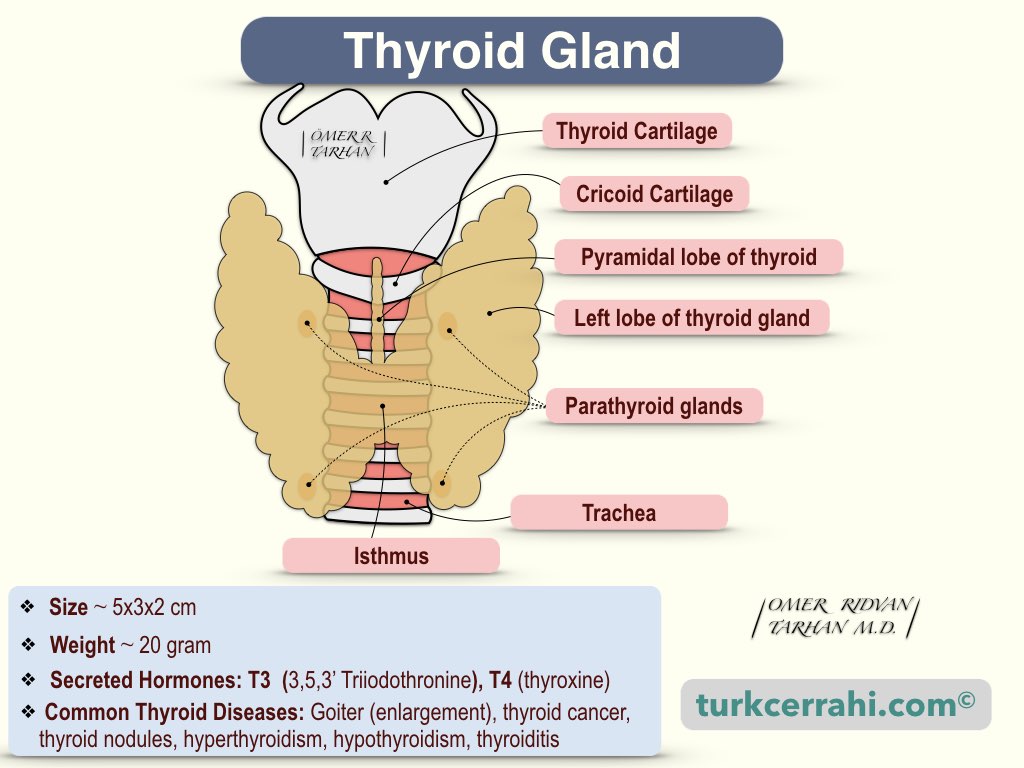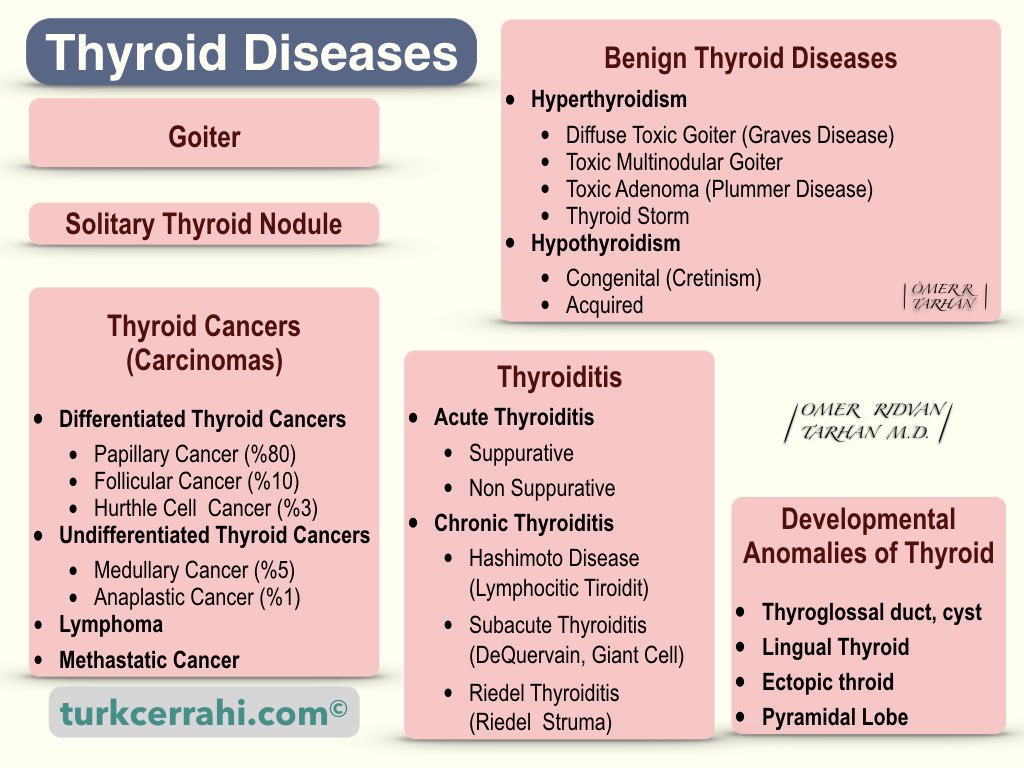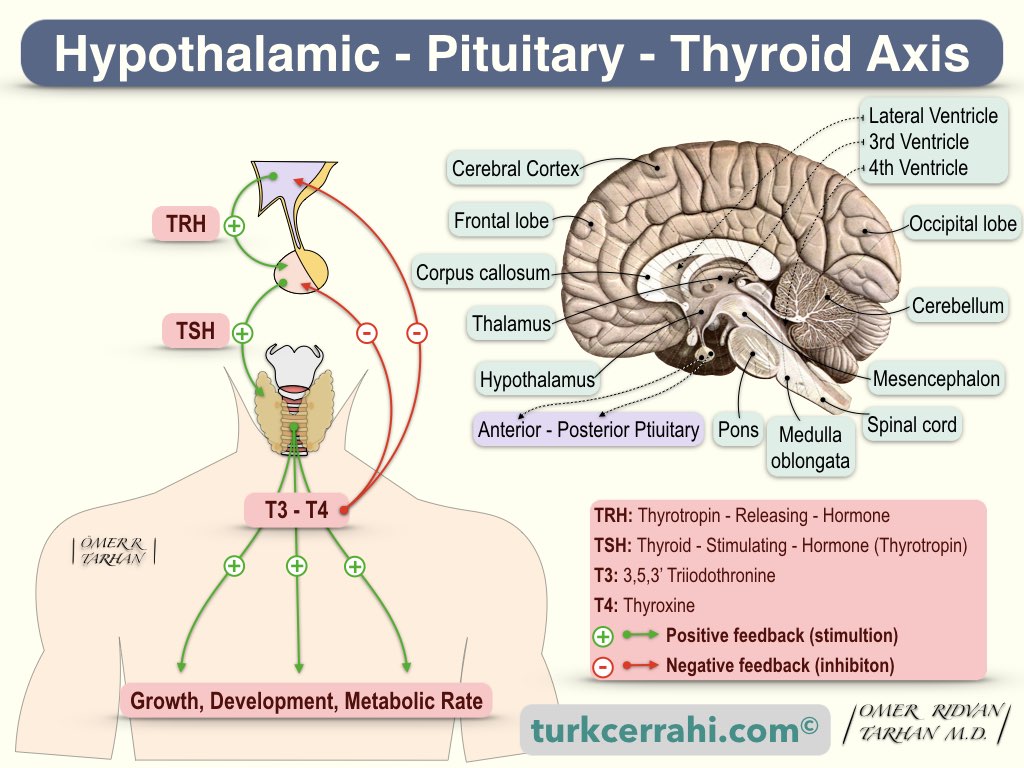Thyroid - Overview


1. Definition
The thyroid gland, also known as the "thyroid," is an endocrine gland that produces hormones. The thyroid is located in front of the neck, beneath the Adam's apple, between the second and fourth tracheal cartilages. The thyroid gland has two lobes connected by an isthmus. Each lobe is approximately 5x3x2 cm (height, width, and depth). Thyroid is Latin for shield-shaped.
2. Thyroid Hormones
Thyroid hormones are iodinated amino acids produced from tyrosine.
- T3: 3,5,3'-triiodothyronine contains three iodine atoms.
- T4: Thyroxine contains four iodine atoms.
Thyroid hormones are synthesized and stored in the thyroid gland, bound to a protein called thyroglobulin. Thyroid hormones circulate in balance in the blood, both bound to thyroglobulin and free. However, only free thyroid hormones enter the cell and have effects on the cell.
3. Functions of Thyroid Hormones
- Thyroid hormones increase O2 consumption, body temperature, heart rate
- Thyroid hormones increase the metabolic rate, glycogenolysis, hepatic gluconeogenesis, intestinal glucose absorption, cholesterol synthesis and degradation.
- In other words, thyroid hormones accelerate carbohydrate, fat and protein metabolism.
- Thyroid hormones affect the function of many organs, for example:
- Thyroid hormones have positive inotropic and chronotropic effects on the heart, increases gastrointestinal motility, increases bone and protein turnover (turnover).
- Hyperthyroidism (too much thyroid hormones) causes diarrhea, hypothyroidism (too low thyroid hormones) causes constipation.
- Thyroid hormones are necessary for growth and brain development in children (including the fetal period).
4. Regulation of Thyroid Hormones

TSH (thyroid stimulating hormone), which is secreted from the anterior pituitary (adenohypophysis), regulates thyroid hormone secretion and thus thyroid gland function.
TSH is controlled by TRH (thyrotropin-releasing hormone), which is secreted from the hypothalamus. In other words, TRH causes the release of TSH, and TSH causes the release of T3 and T4. T3 and T4 suppress TSH and TRH release. This control mechanism is called the “hypothalamic-pituitary-thyroid axis."
Let's remember:
Anterior Pituitary (Adenohypophysis) Hormones
- FSH (follicle stimulating hormone)
- LH (luteinizing hormone)
- Prolactin (milk secreting)
- Growth hormone
- ACTH (adrenocorticotropic hormone)
- TSH (thyroid stimulating hormone).
Posterior Pituitary Hormones
- ADH (antidiuretic hormone, vasopressin)
- Oxytocin (facilitating labor, milk secretor)
5. Parathyroid Glands
Behind each thyroid lobe, there are two parathyroid glands of lentil size (a total of 4). Parathyroid glands secrete parathyroid hormone (PTH, parathormone) that raises blood calcium. Inadvertent removal of the parathyroid glands along with the thyroid gland results in hypoparathyroidism, which in turn causes hypocalcemia (low blood calcium).